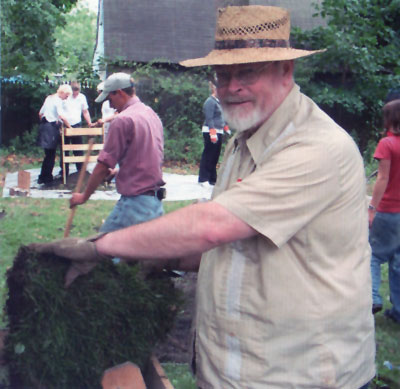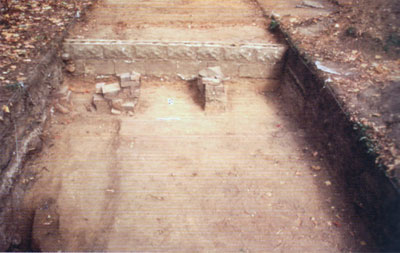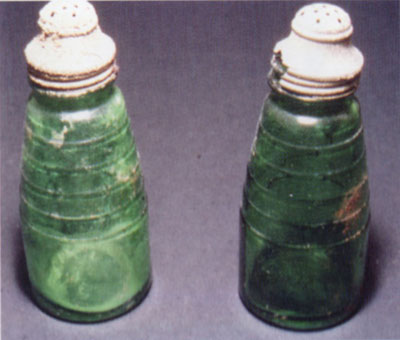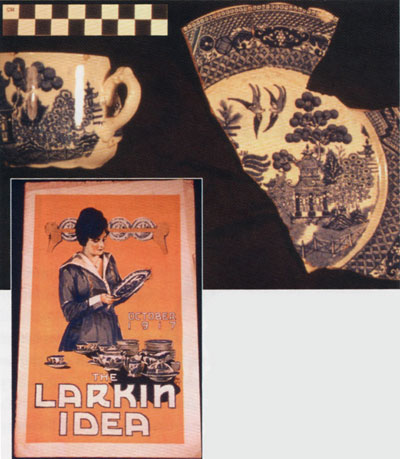
Robert L. Schuyler, Associate Curator-in-Charge of the Museum’s Historical Archaeology Section, remembers a fascination with the past as a 4-year-old living in New Haven, Connecticut. His interest then was paleontology (the study of prehistoric creatures such as dinosaurs), but by the fifth grade, Schuyler’s visits to Yale University’s Peabody Museum and his reading of National Geographic magazine shifted his attention to archaeology. In junior high school he badgered his elder brother into driving him to the 19th-century ruins of Fort Nathan Hale—a visit which foreshadowed Schuyler’s later career choice of historical archaeology. As a high school student, he joined the Connecticut Archaeological Society and participated in summer excavations at an Archaic period prehistoric site on Grannis Island.
In 1960 Schuyler began undergraduate studies in anthropology at the University of Arizona. While there he participated in their field school at Grasshopper Pueblo, Arizona, and became interested in comparing the ancient civilizations of the Old and New Worlds (e.g. the Maya of Mesoamerica with the Harappans of the Indus Valley). In 1965 Schuyler started graduate work at Harvard University. Focusing on Mesoamerican archaeology, he spent a field season in Guatemala excavating house mounds at the Maya site of Seibal in the jungles of the Petén. While at Harvard, Schuyler met James Deetz, a preeminent historical archaeologist, and took part in Deetz’s now famous “New England Gravestone Study” by recording tombstones in the cemetery of Newburyport, Massachusetts. Still intending to study Mesoamerican archaeology, in 1966 Schuyler transferred to the University of California, Santa Barbara, where Deetz was on the faculty. During the 1960s, the fledgling sub-discipline of historical archaeology was coming into its own, and by 1967 Schuyler’s increasing awareness of its potential led him to shift to this field of study.

While still in graduate school Schuyler accepted his first teaching job at the University of Maryland in 1969. His research included work on Potomac River Native American sites from the Contact period (17th–18th centuries). In 1970, Schuyler took a teaching position in anthropology at City College of New York (CUNY), where he investigated a 19th–20th century African-American oystering community at Sandy Ground on Staten Island. At this time he also conducted research in Lowell, Massachusetts—one of the first large cities in America to undergo industrialization in the early 19th century—investigating the boarding houses of female factory workers. In 1975 he completed his Ph.D.—a study of the rise of American historical archaeology using the West Coast as an example—and soon afterwards he edited an important volume laying out the development of this relatively new sub-discipline, Historical Archaeology: A Guide to Substantive and Theoretical Contributions (1978).

Schuyler came to the University of Pennsylvania in 1979 and took on the Penn Museum position in historical archaeology previously held by John Cotter—one of the founding fathers of modern historical archaeology. His primary teaching appointment was in the American Civilization Program, with a secondary appointment in the Department of Anthropology (his primary affiliation changed to Anthropology in 1993). One of his first tasks was to develop a Ph.D. program in historical archaeology. He did this by originating the concept of historical ethnography, an approach that combines archaeology, archival documents, oral histories, and the study of living communities. Historical archaeology is distinctive not only in that all of these sources are present, but as Schuyler puts, it “is the only archaeology in which the subject matter is still forming.”

Schuyler’s first Penn field project began in 1980 at the short-lived silver mining town of Silver Reef, Utah (ca. 1877–87). Here, his students excavated the ghost town, uncovering archaeological remains which were complemented by local oral histories and extensive documentary research on the roughly 4,000 individuals who at some point called Silver Reef home.
The South Jersey Project, undertaken in association with the Vineland Historical and Antiquarian Society, began in 2001. Although much of the Pine Barrens area was uninhabited in 1850, by 1880, through the efforts of Charles K. Landis, this part of upper Cumberland County had a flourishing, highly planned Victorian town (Vineland). Schuyler’s research focuses on the story of Vineland from the 1860s to the present. He is particularly interested in examining the processes underlying how an agricultural center of the mid- to late 1800s came to have the largest municipal boundaries in present-day New Jersey. Schuyler looks forward to continuing this project and to training students in historical archaeology and ethnography for several years to come.
